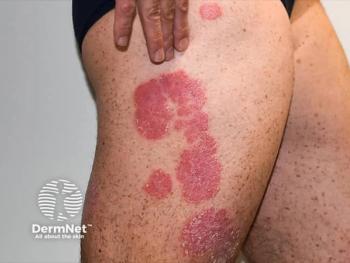
Exclusive: Outgoing AAD President Seemal Desai, MD, FAAD, on the 3 Issues That Will Shape Dermatology in 2025 (& Beyond)
Key Takeaways
- Dermatology is rapidly evolving with new therapies and technological advancements, but challenges persist in maintaining high-quality patient care.
- Federal-level physician payment reform is needed to address declining Medicare reimbursement, which threatens patient access and practice viability.
Dermatology undergoes rapid transformation with new therapies, but faces challenges in payment reform, certification awareness, and balancing technology with patient care.
If there’s 1 word to sum up the past year in dermatology, it’s transformation. From an unending list of new emerging therapies for previously untreatable skin diseases to the growing narrative surrounding patient and product safety, the practice of dermatology is evolving—and fast.
And yet, while there are incredible strides being made on so many fronts, my hope is that we balance the focus on the “shiny objects,” such as artificial intelligence (AI) and new procedures, with the often-unspoken issues that are at the very heart of our profession and ensuring excellence in all that we do.
As the outgoing president of the American Academy of Dermatology, a member of the Physician Leadership Council at Platinum Dermatology Partners —a network comprised of leading dermatologists across the country—and a practicing board-certified dermatologist, I feel compelled to not only spotlight the wins, such as the pace of dermatological innovation and exciting advancements in immunology and skin disease treatments, but also share 3 important issues that I believe will challenge and shape our industry in the near future.
First is the need for federal-level physician payment reform of the Medicare Physician Fee Schedule to ensure we can continue providing high-quality patient care.
Second is the importance of building greater awareness and importance around the role of board-Certified dermatologists.
Due to the fast-growing nature of our industry, the number of non-certified dermatological practitioners performing dermatological procedures now represents upwards of
Third and finally is the importance of balancing technological advancements with the human element of patient care.
On 1 end, we can’t deny the value of AI in analyzing patient data, optimizing treatment plans, improving patient accessibility, and enhancing practice efficiency. Nor can we overlook the power of technology in early detection of skin diseases, reduction of human error during cosmetic treatments, and predictive research. However, nothing will replace clinical judgement, patient relationships, and personalized treatments. AI can undoubtedly serve as a powerful tool across our industry if we avoid a ready-fire-aim approach to its use with patients and solving inefficiencies. As always, patient care must come first.
As I echoed throughout my presidency, unity on issues such as these is what will propel us forward as a profession. It is critical we are united in our quest for the eternal betterment of our specialty, and ultimately, our patients.
References
- Ehrenfeld JM. AMA: Patients, physicians continue to endure Medicare cuts. American Medical Association. March 6, 2024. Accessed April 23,2025.
https://www.ama-assn.org - Qi Q, Hibler BP, Coldiron B, Rossi AM. Analysis of dermatologic procedures billed independently by nonphysician practitioners in the United States. J Am Acad Dermatol. 2023;88(5):e203-e209.
doi:10.1016/j.jaad.2018.08.047 - Rossi AM, Wilson B, Hibler BP, Drake LA. Nonphysician practice of cosmetic dermatology: A patient and physician perspective of outcomes and adverse events. Dermatol Surg. 2019;45(4):588-597.
doi:10.1097/DSS.0000000000001829
Newsletter
Like what you’re reading? Subscribe to Dermatology Times for weekly updates on therapies, innovations, and real-world practice tips.


















